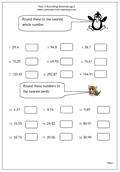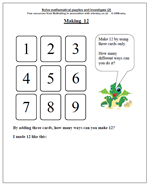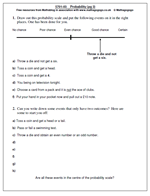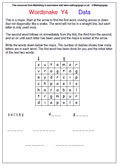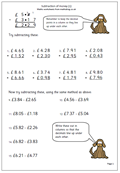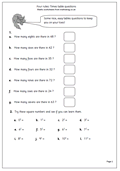Year 3 is a time when children make huge strides forward in their mathematical thinking, as long as they have got a secure background knowledge. With over 20 pages to choose from, our worksheets in the Know Number Facts reflect this development. We have worksheets on knowing addition and subtraction facts with numbers up to 20, doubling numbers and subtracting from a teen number.
We also have a number of pages dedicated to calculator games. The aim of these is to use the calculator as a means of showing knowledge of tables and multiples of 3, 4, 5 and 10, not just as a means of working an answer out.
Division, of course, is much easier if tables are known and we have a growing number of pages of division questions.

